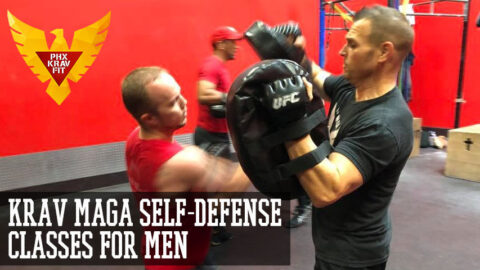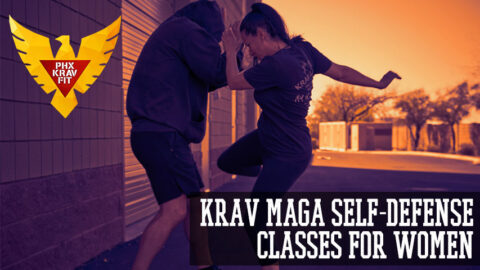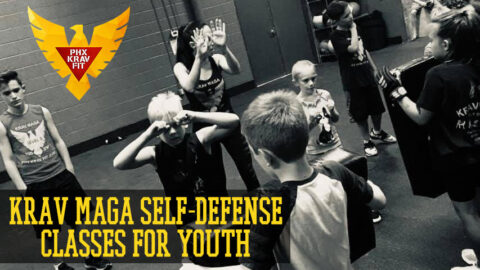Verbal De-escalation
Talk Could Be Your Cheapest Way Out
Before many situations become violent, the first stage consists of verbal assaults, taunts, cut downs, or a combination of insults to degrade one’s date or mother. What is scary in today’s dojos, training videos, and schools’ curriculums is the lack of training to deal with these situations first. If one can defuse a tense verbal situation before it becomes violent, isn’t that the better choice? I always tell my students it is better to shrug off a couple cuss words, than to put yourself in harms way, which will lead you to put your opponent in the hospital, hence possibly putting yourself in the courtroom.
Many tough guys forget that any idiot can throw a couple of punches, but the smarter practitioner first tries to win a fight without throwing one punch. Therefore, the paradigm of “winning” might need to be changed. Let me advise you that winning can simply mean not fighting, and not starting a chain of events which has you looking over your shoulder every time you go out.
Obviously there is a line which needs to be drawn, where physical consequences have to be expressed. But, let’s first take a look at avoiding that, and using one’s emotional and psychological tools to win. At the onset of an argument one has to simply follow four steps to attempt to de-escalate a possible physical altercation, and prepare if one does happen:
Step 1:
When you are first made aware of an irate person, giving you a harsh stare down, followed by some expletives, and who is now approaching you, you must gain distance. Slowly take a couple steps back, and relax. Why? Taking a couple steps back usually starts the de-escalation process, opposed to rushing up to the other guy’s face, and meeting nose to nose. By taking a couple steps back you can also see a lot more of the playing field ‚ the closest exit, a possible weapon, or his friend waiting in the corner ready to jump in.
Step 2:
Almost simultaneously you need to assume what is called a passive stance. Don’t judge a book by its cover, because your passive stance is a “sneak attack” fighting stance if needed. With arms up, do not look eye to eye ‚ look at his midsection ‚ and take a slight side stance. Relax your face to a non-emotional expression, neither smiling nor frowning. Why?: We are doing exactly the opposite of what other idiots do (who later end up injured idiots). By rushing to defend one’s ego, most people go belly to belly, hands down, and focus on their opponent’s eyes. This leads to being too close to see the incoming right hook, not being guarded, being totally unaware of where an exit is, not seeing a possible weapon, or not seeing his friend ready to sandwich you in a flurry of punches.
Therefore, one can reason that it is better to take some steps back and secure a proper position. By taking the passive stance, one can now attempt to defuse a fight, while also being more prepared for an attack and being aware of the environment. Keeping your arms up adds protection and you are now closer to most fighting positions. Your eyes are not focused on one thing, but on a person’s center of gravity, which cannot easily fake one out ‚ as it also gives the bigger picture of the possible attacker. Lastly, by assuming a side stance we are not only closer to most fighting stances, but are also ready to strike quickly, retreat from a strike, or absorb a sudden blow by being more balanced.
Step 3:
Know what to say. Have a couple of general, non-threatening phases to calm the situation. “I’m sorry”, “I didn’t mean to” are good starts. Be genuine with your voice tone, not angry or degrading. Occasionally look at the aggressor’s face, but keep in mind that your focal point is their midsection. The key to this step is balance between being real about whatever you’re saying, while keeping your emotions under control. If you accidentally took someone’s seat, apologize, and find a quick solution (find him another chair, or move yourself).
Although this step is important, remember it is how you say your response that counts more. Why? You have to respond with something, as not responding
blame without actually saying, “It is my fault” helps
them save face, and helps you get back on with enjoying yourself. Although any response can be taken as offensive, realize that most people just want to be recognized or whatever you did be recognized (i.e. you bumped into his beer hand, table, etc.).
Step 4:
Be ready, and plan your attack according to your own ethical standards, if he does attack. This is where your physical training does pay off, but make sure you have options to injure to a degree. A response from an attack from a high school punk who is alone will hopefully differ from an attacker who is 6’5” 315 lbs., looks like he’s been in a couple fights just last week, and is backed up with a group of rowdy friends.
Know how to achieve different outcomes such as how to hit and run quickly, finish an opponent off with brutal tools, and hold someone down until security or law enforcement can help out. Why? Given that Murphy’s Law comes up more in combat than anywhere else, plan, but plan to adapt. For instance, know that his punch will be counted by a side step and kick to the groin ‚ but be ready for a takedown or roundhouse kick as well.
The final word:
When you jump to conclusions after you’re being insulted, you’re increasing your chances of regret, and a bad decision which could have you paying for it (possibly out of your pocket for years!). Find creative ways to deal with a wide range of situations. Think what you would do if someone insults your wife,
continues to bang into you on the dance floor, or says you stole his parking space. Practice cooling a fight between your friend and a third party.
Don’t forget about your resources such as security, the police, or the manager of the business. It is better to have security and managers on your side in the beginning, than having their story affected as they tell it to a cop because you put a hole in their wall, broke numerous glasses, and scared a dozen of their customers to not come back.
However, if you give peace a chance, and still are met with hostility and an attack ‚ you are backed up ethically, emotionally, and more so legally. Staying composed when another is hurling a plethora of insults takes character. Learn how to make the best decision without violence, but also strike with impunity when pushed over your line. Decide in advance where that line or limit is; a push, punch, threat with a weapon, or backing up a third time. Mixing verbal de-escalation training and your creativity is the only way you will find out.
Every thing comes down to training. You will fight as you train, so train as you want to fight. Sparring, drilling, and technique work are all great, but work it all into scenario training. Role playing makes it fun, breaks the monotony, and gets you thinking creatively. So, before a punch is thrown, try talking yourself out of a situation. At times have the aggressor back down from good responses, and other times have them come out swinging regardless of your attempts at peace.
Do not take this information for granted. This is truly a multi tasking skill which has you backing up, assessing your opponent, scanning the environment, responding with calming statements, and also planning your attack all at once. It is problem solving at its highest level and it all usually happens under ten seconds.
Mentally you are problem solving, emotionally you are weathering painful insults, and physically you are positioning yourself ready to defend more than your ego. If you don’t train it, you won’t just obtain the skills when needed. Some people say that talk is cheap, but it could be the cheapest way out of your next altercation.



